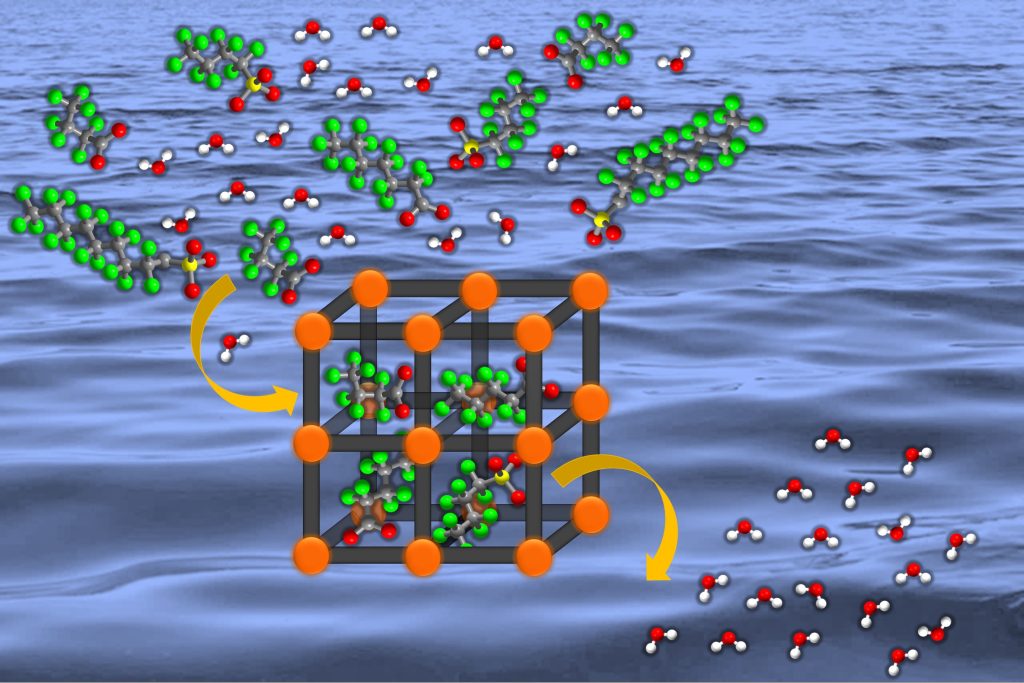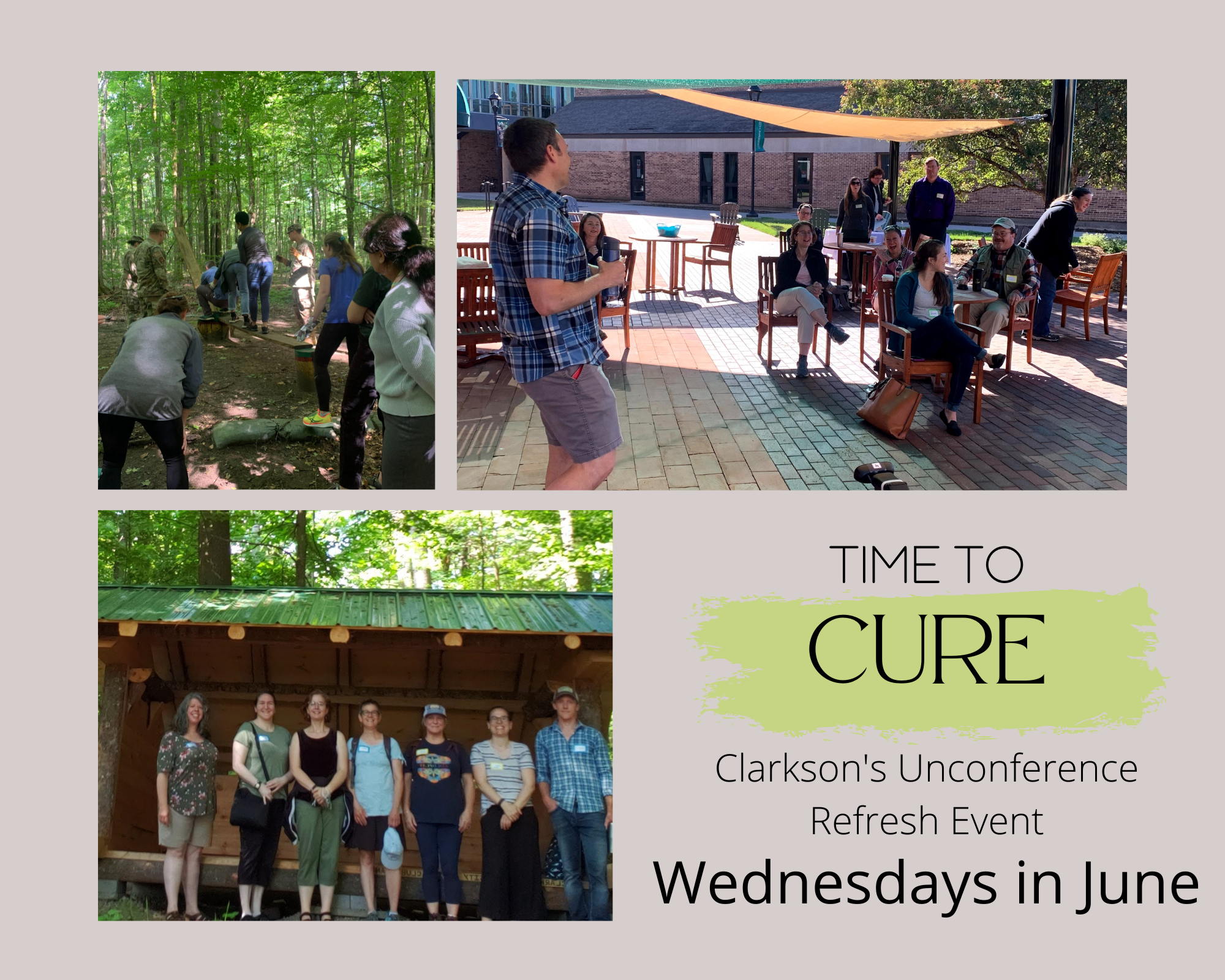Clarkson University Kodak CAMP Distinguished Professor Mario Wriedt and his team recently had a research paper published in Matter, a peer-reviewed scientific journal published by Cell Press that covers the general field of materials science. The paper is titled “Metal-organic frameworks as platforms for the removal of per- and polyfluoroalkyl substances from contaminated waters.”

Dubbed as forever chemicals, per- and polyfluoroalkyl substances (PFAS) are emerging contaminants detected in most water spheres around the globe, including our drinking water, and pose adverse effects on human health.
“They are everywhere. In every water sphere around the globe, even in rainwater, you can find PFAS,” Wriedt said. “We need to remove them from contaminated water since adverse health effects are associated with PFAS exposures. This has been done traditionally using what we have. Unfortunately, those existing absorbents, such as activated carbons and ion exchange resins, don’t do very well with PFAS.”
Wriedt is leading the field in developing a process by which he can use metal-organic frameworks (MOFs) to remove these contaminants from water at a much more efficient rate than any process currently available.
MOFs are a new class of highly porous materials that are structured similarly to a jungle gym, where the nodes represent metal clusters or metal ions, the struts are organic ligands, and the resulting pores of the framework are accessible for guest molecules.
“My group is spearheading a new area of PFAS remediation using MOFs,” Wriedt explained. “They do extremely well, if not the best materials out there to remove those PFAS.”
Wriedt said that not only do MOFs offer a higher removal capacity than existing technologies, but the speed at which they are able to remove the contaminants is significantly faster as well. MOFs can remove PFAS within seconds, as compared to the days it can take some other materials.
Another benefit to using MOFs is that they are reusable.
“You can strip it off the PFAS, destroy it using for example plasma or ultrasound technology, and then you can put it again in contaminated water and reuse the MOF,” Wriedt said.
More information on Wriedt’s paper can be found by visiting https://bit.ly/3gL7N64.

